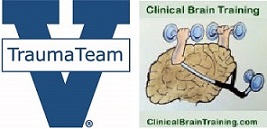An essential component of Clinical Brain Training is to stress basic principles of care instead of care based on ego, limited experience, and fads. Basic principles are a fundamental concept in all high-risk endeavors. Firefighting, air combat, martial arts, nuclear power, infantry operations, and sports all have these essential principles that are basic to safe, effective performance. They are not all that is needed for effective performance, but without them, effective action is impossible.
The purpose of basic principles is to align the practitioner’s thoughts and actions during high-stress situations. When you have many things that you “can” do, basic principles tell you what you “must” do.
In modern medicine, there is a lack of basic principles. The reasons for this are several. First, there is a general dislike for “cookbook medicine”. This stems from the insecure belief that if you could read how to take care of patients in a book, what do you need doctors for? Second, there is the phenomenon of “ego-based medicine” where many physicians discount research and expert thought in favor of their own experience and beliefs. However, if you analyzed any busy physician’s practice, you would see basic principles emerge, even if they refused to admit they exist.
Thus, we created a system that could: assess the ability to think clearly and efficiently, assimilate clinical data into a diagnosis and treatment plan, and begin to fit the acute situation into the overall patient’s plan of care. We stress basic principles in dealing with acute changes in patients’ condition.
These basic principles are:
• Always go see the patient if there is an acute change in their condition
• Always take, or have someone bring you the daily flowsheet and chart immediately so that you have access to essential information in a timely manner
• Always bring help with you into the room of an acutely ill patient
• Always assess the airway, breathing, and circulation first
• It is always better to rapidly control the airway in the very unstable patient
o Have a very low threshold for controlling the airway in unresponsive, or poorly responsive patients
• Always examine the major organ systems, and specific areas of concern
• Always insure you have IV access
• Supplemental oxygen is always a good idea in the acute situation
• For acute mental status changes, check recent medications
• If the patient is truly ill and unstable, cast the net of labs and studies widely until you have stabilized the patient
• Think of where the patient will need to go next
• As soon as you have initiated stabilization and diagnosis, call your higher-ups
• Do not send patients to areas where they can not be closely monitored until you have stabilized their airway and overall condition
• A hypotensive post-operative patient is bleeding until proven otherwise
• Pulmonary embolism and myocardial infarction can present as anything from cardiac arrest, to a cough and you can not exclude either condition on physical examination
As far as the issues of cost containment, and husbanding of medical resources, we reinforce safety in all decisions, and not cost-efficiency. We feel the rapid diagnosis and treatment of life threatening conditions will save more money in the long run than a less intense, piecemeal diagnostic and therapeutic strategy. Multiple studies have found that costs are much higher if significant conditions are not acted upon rapidly.



 Subscribe in iTunes
Subscribe in iTunes